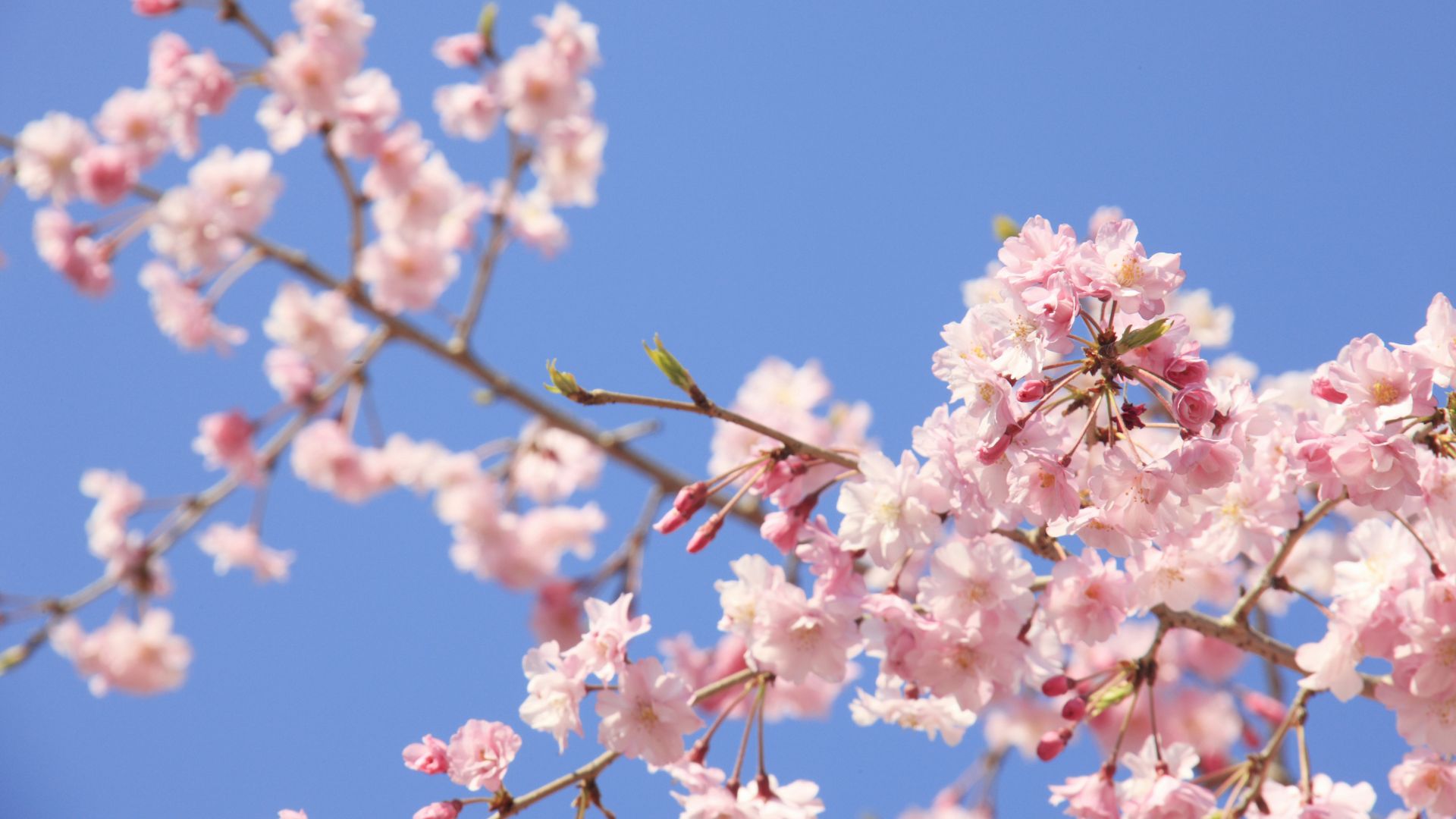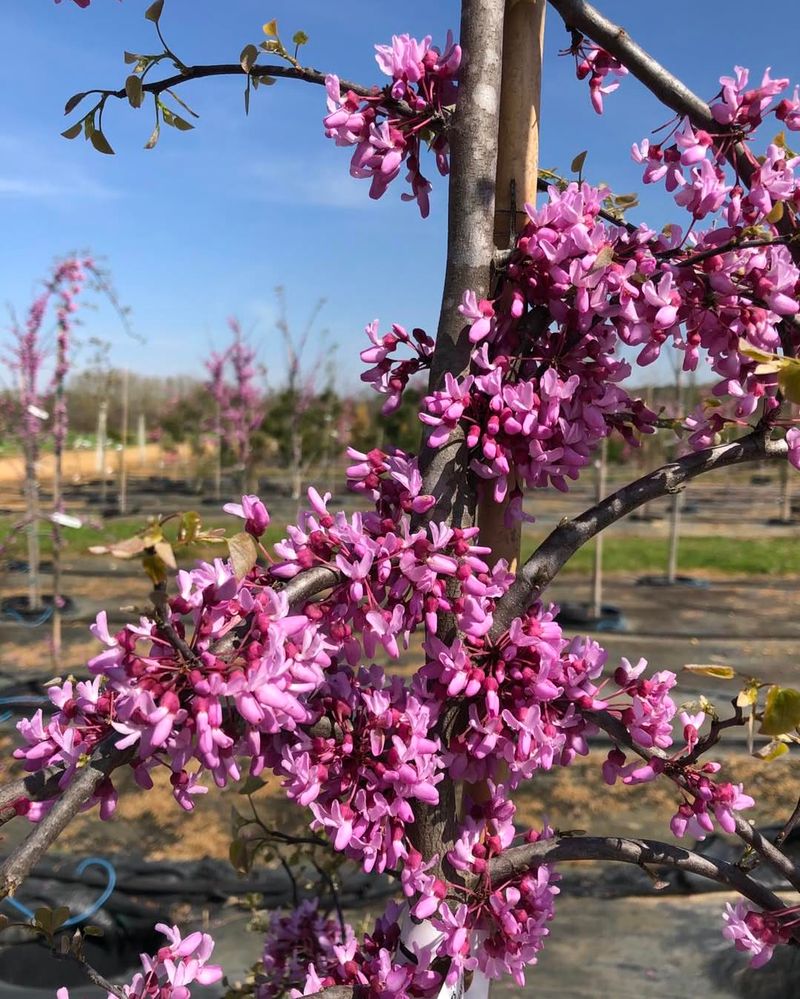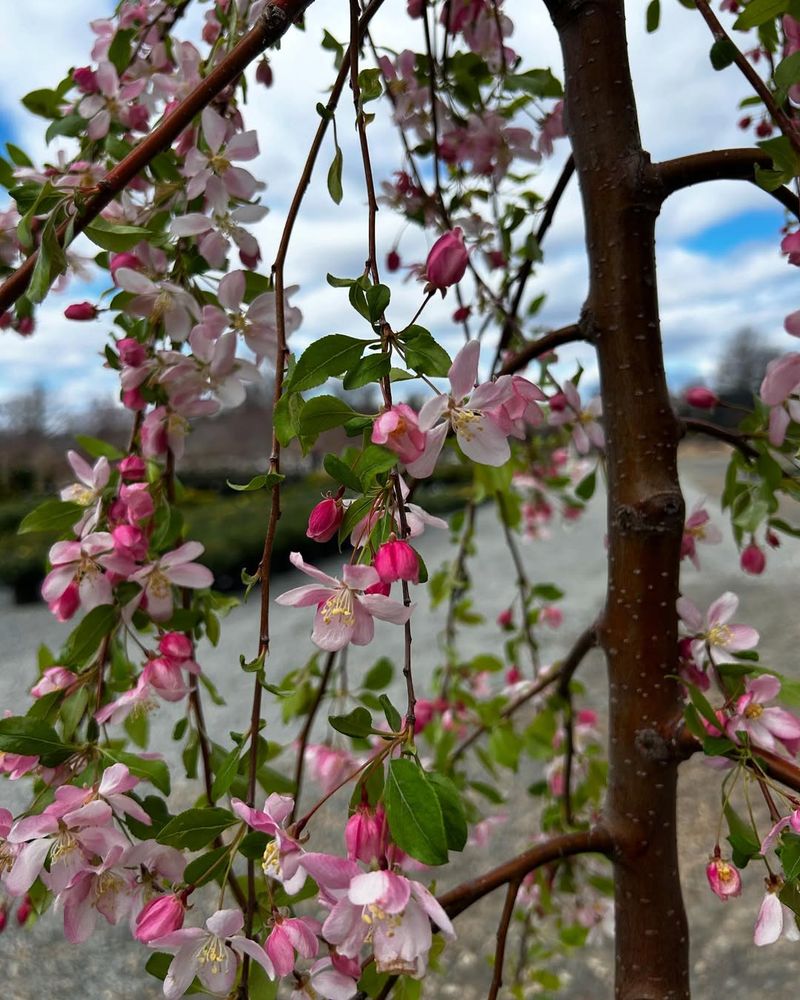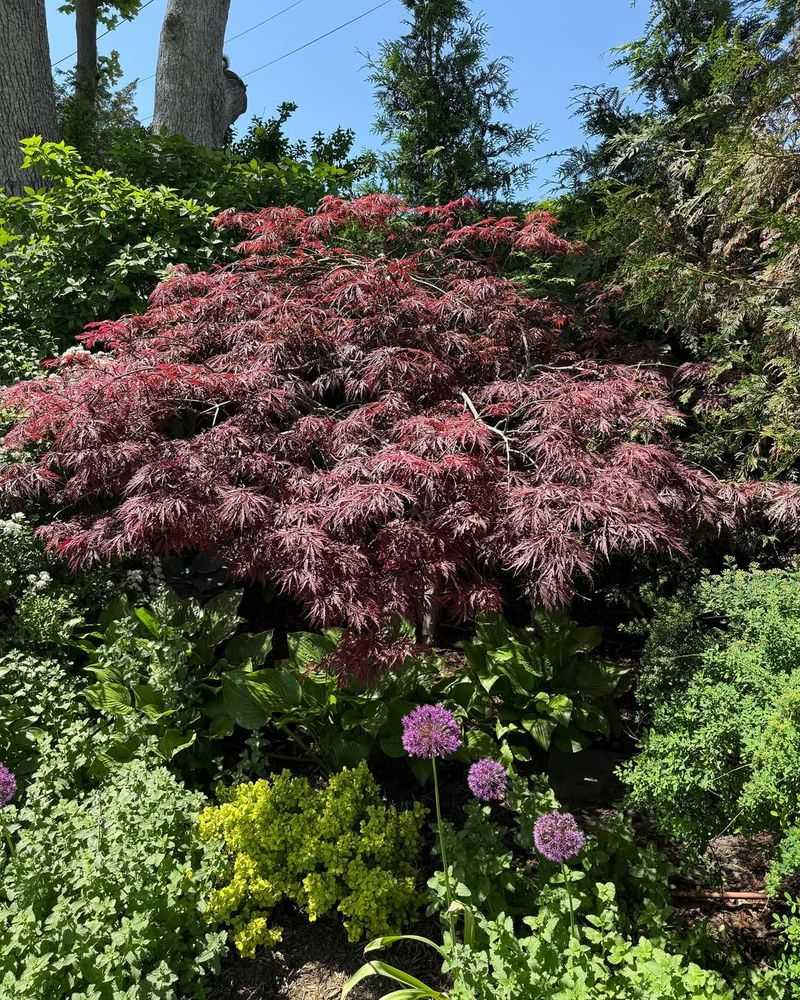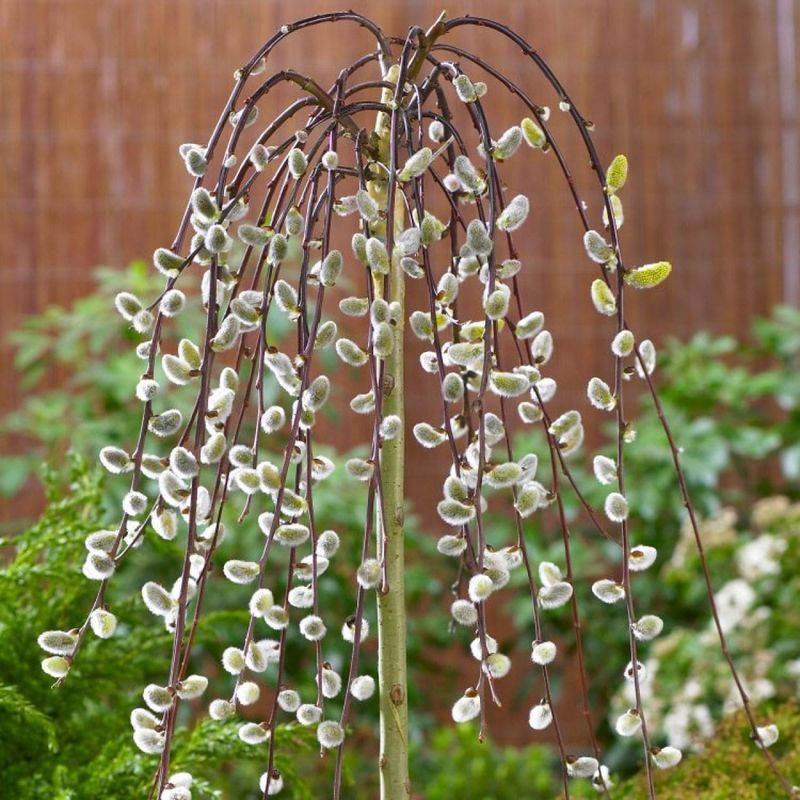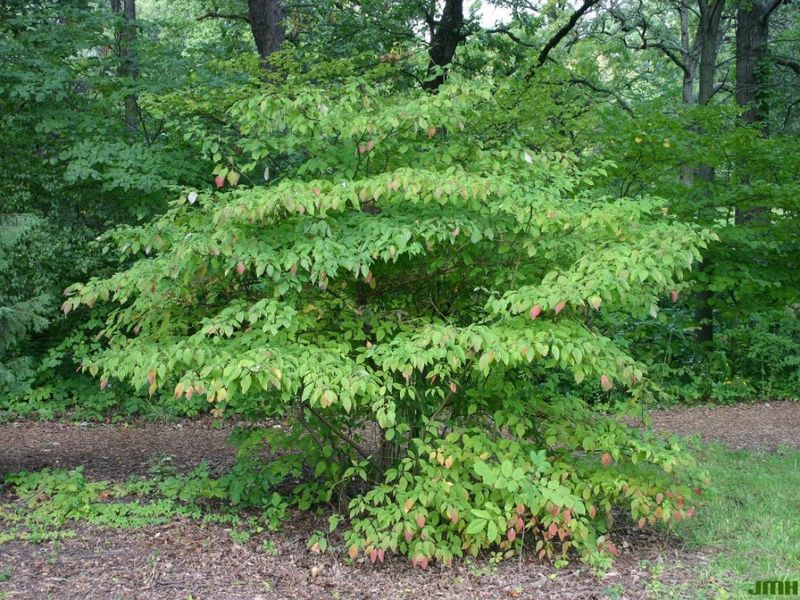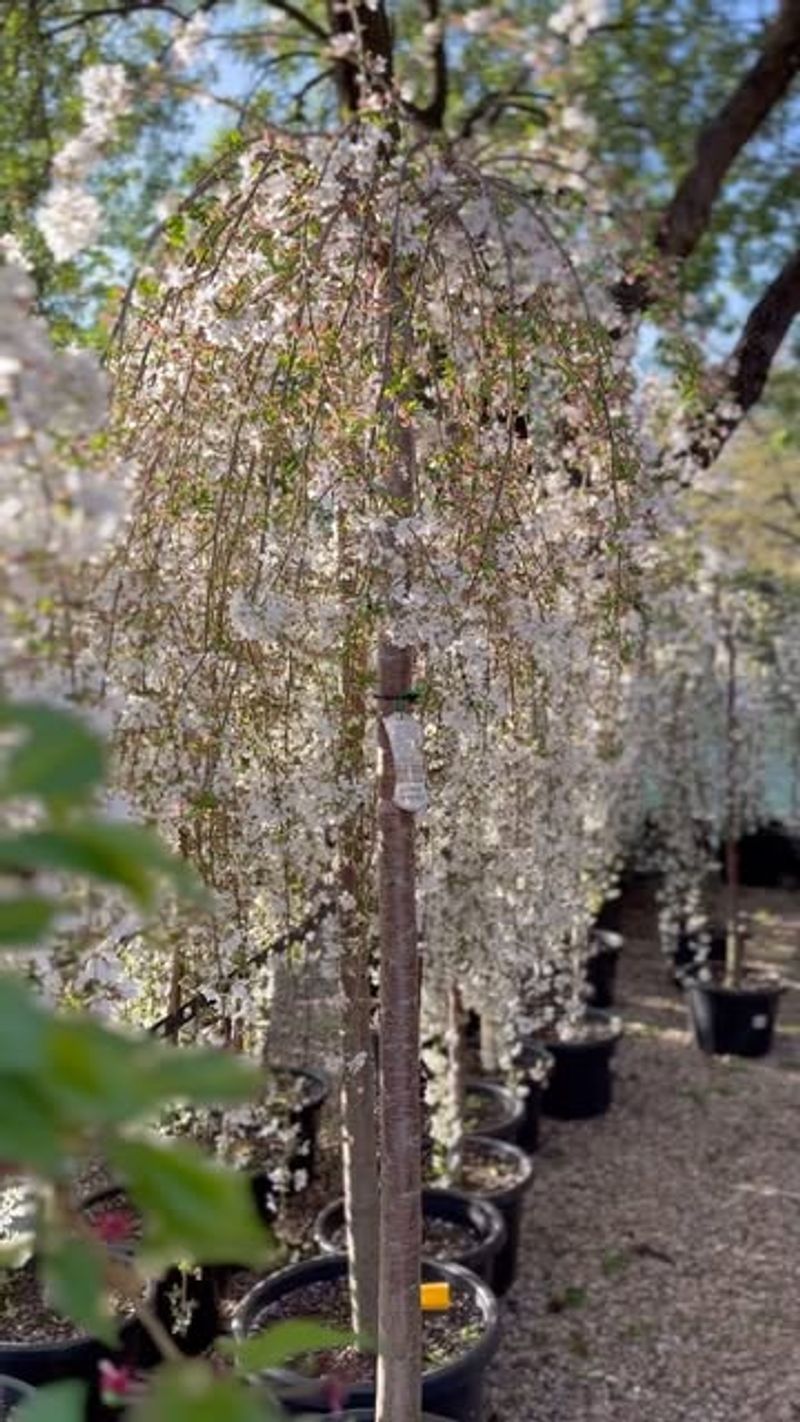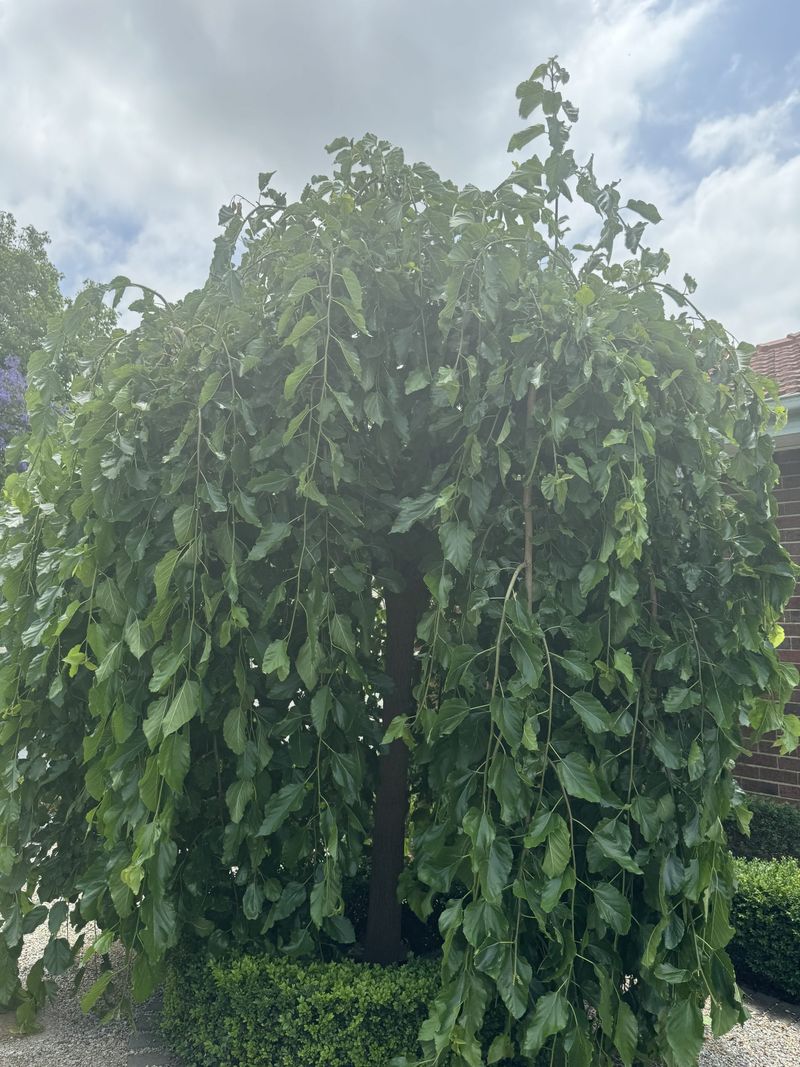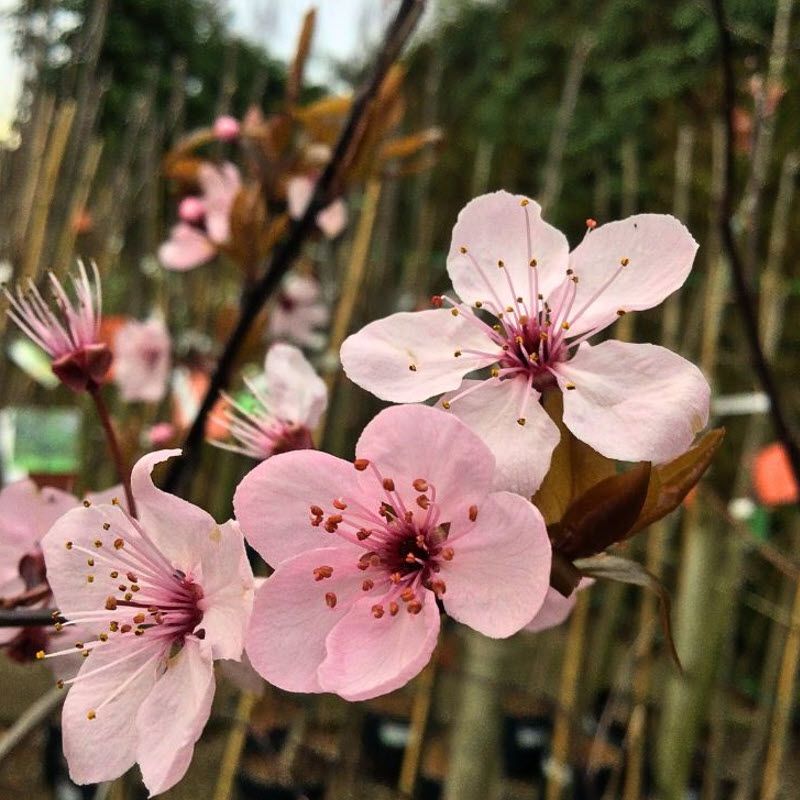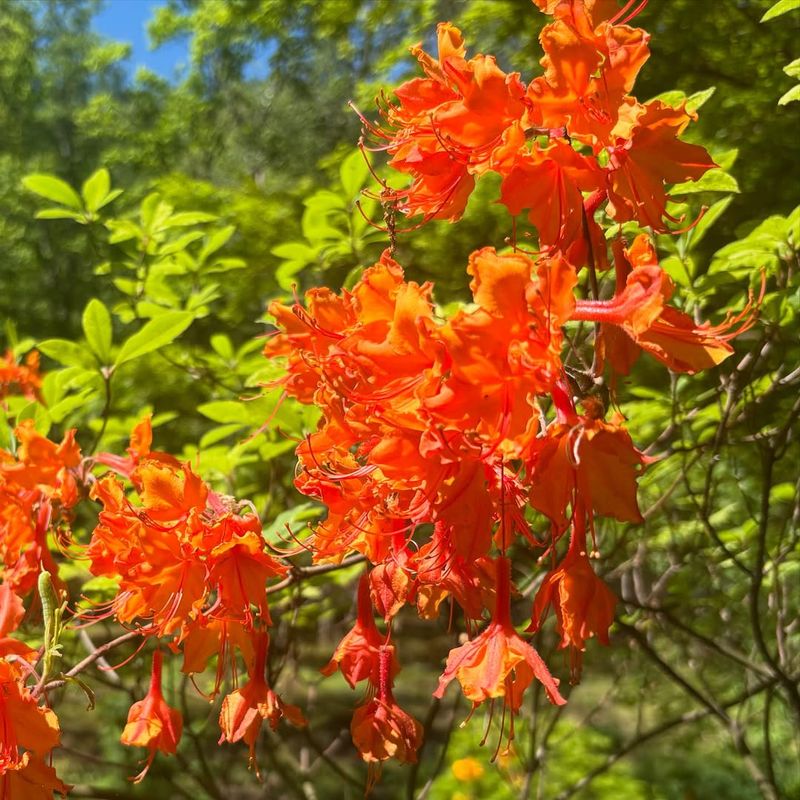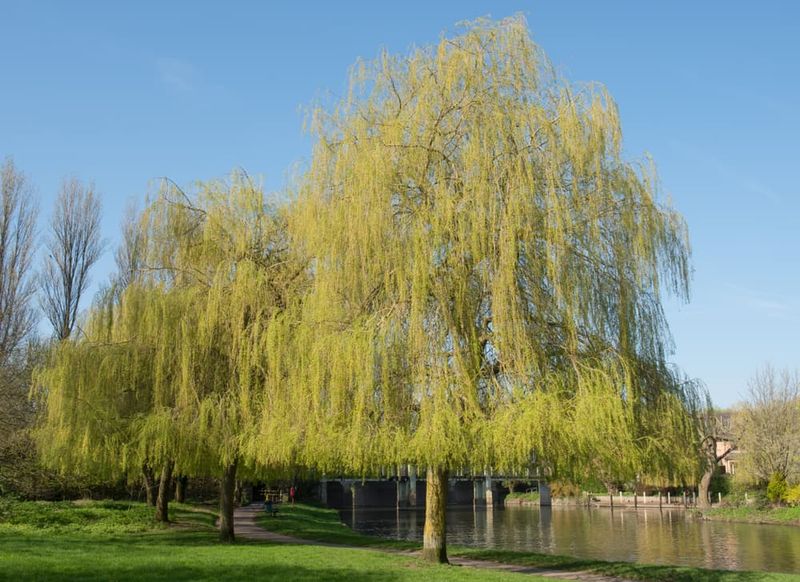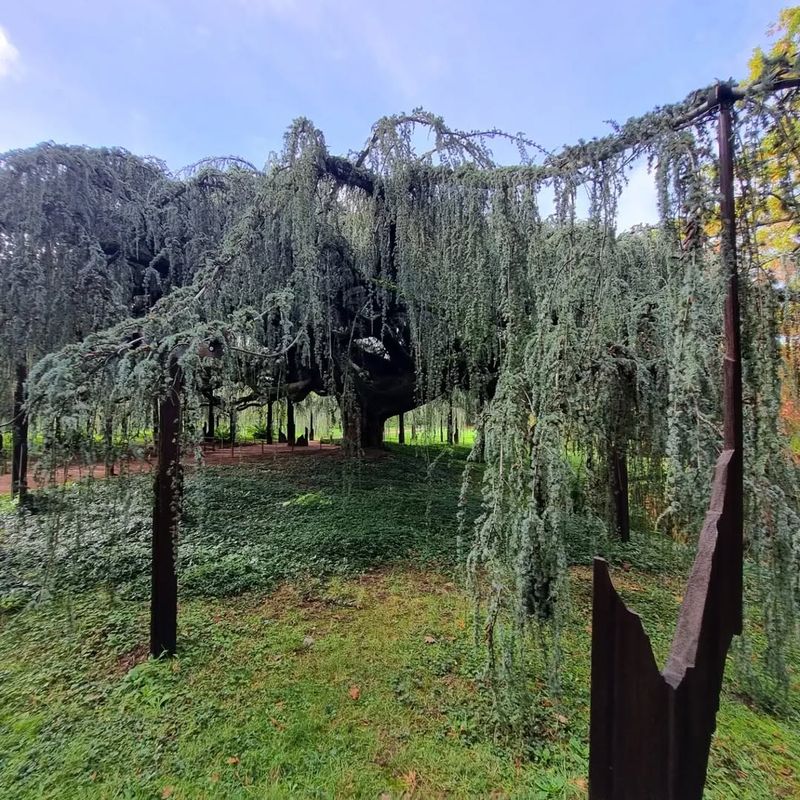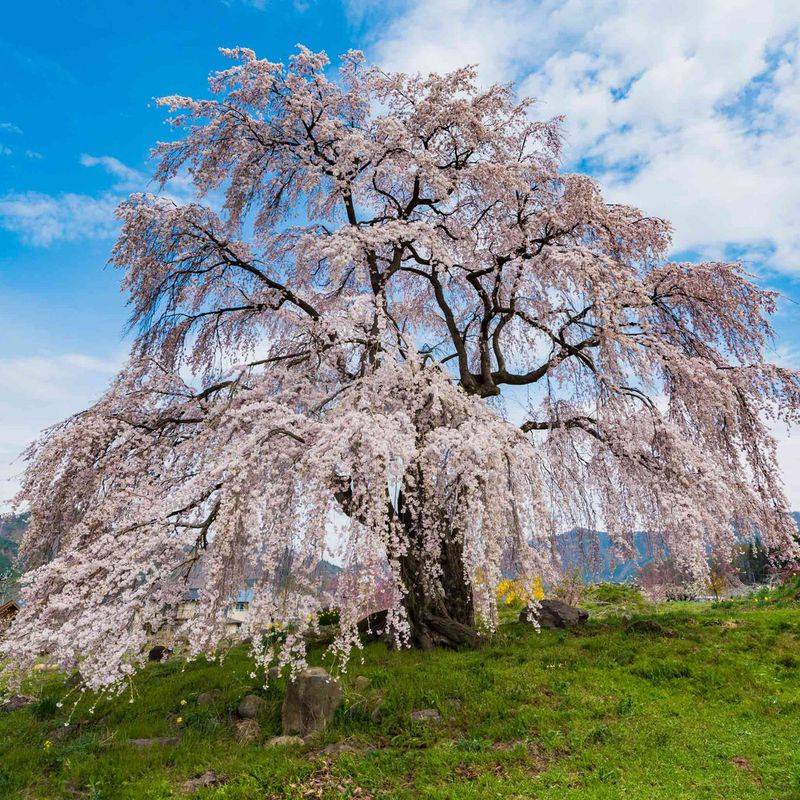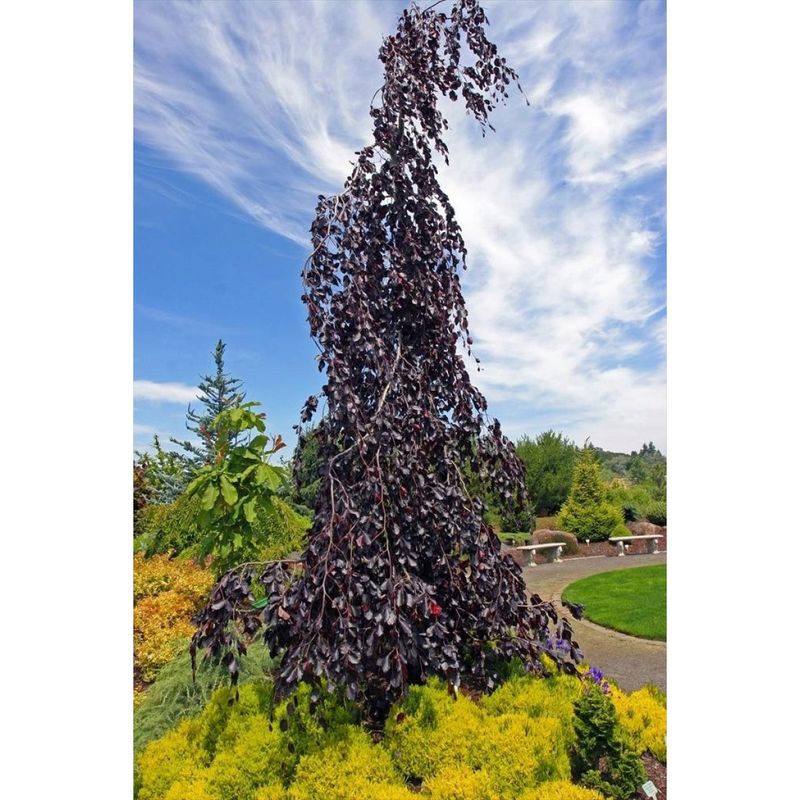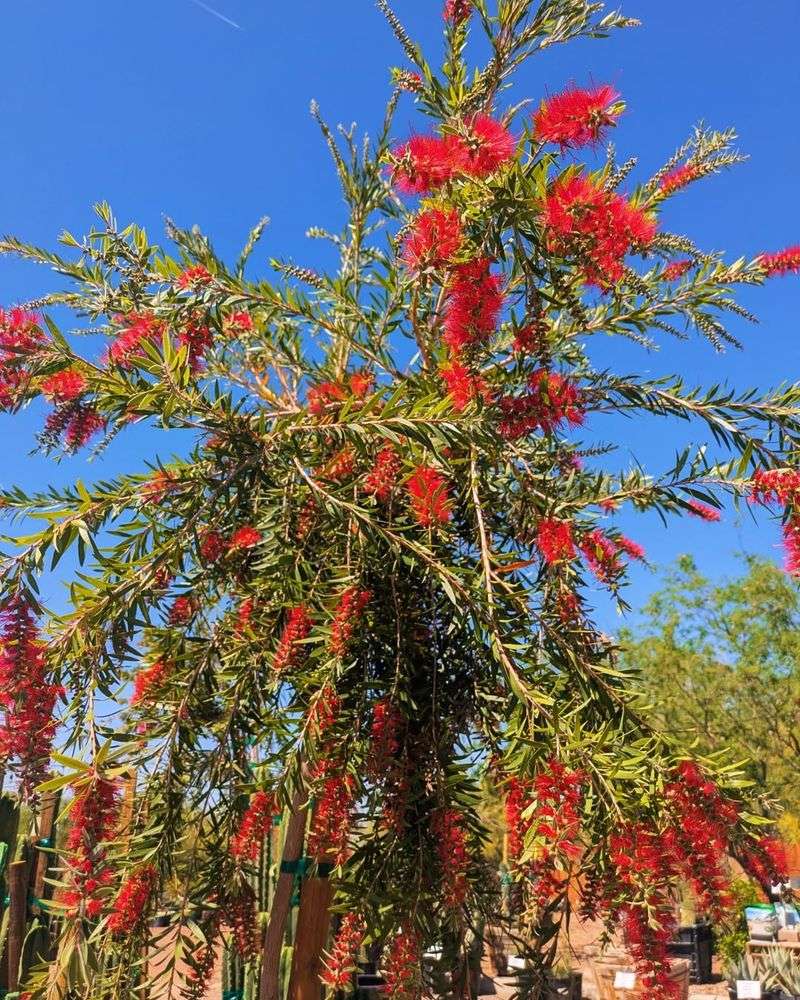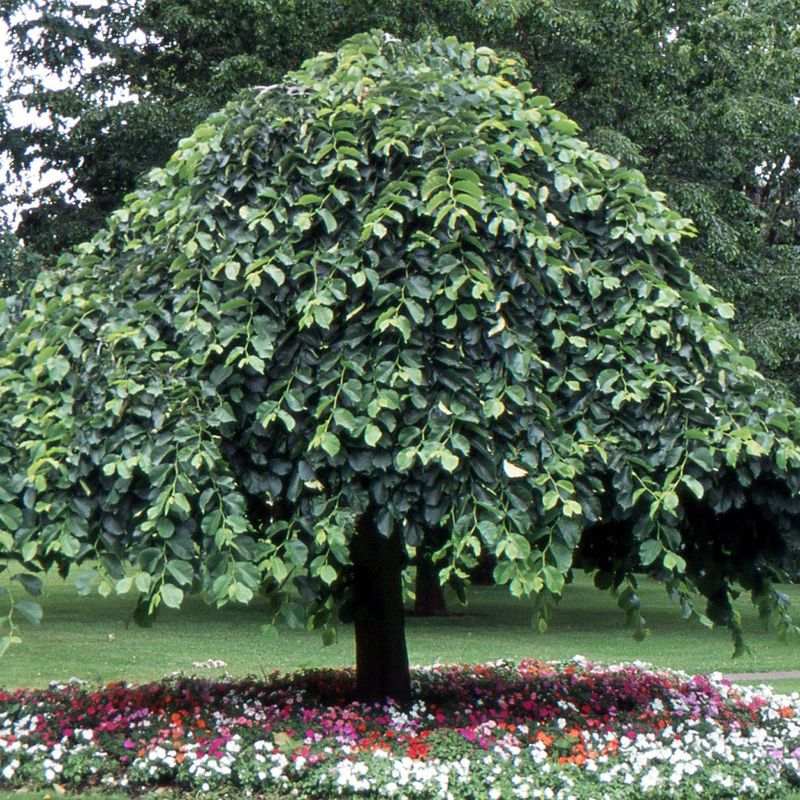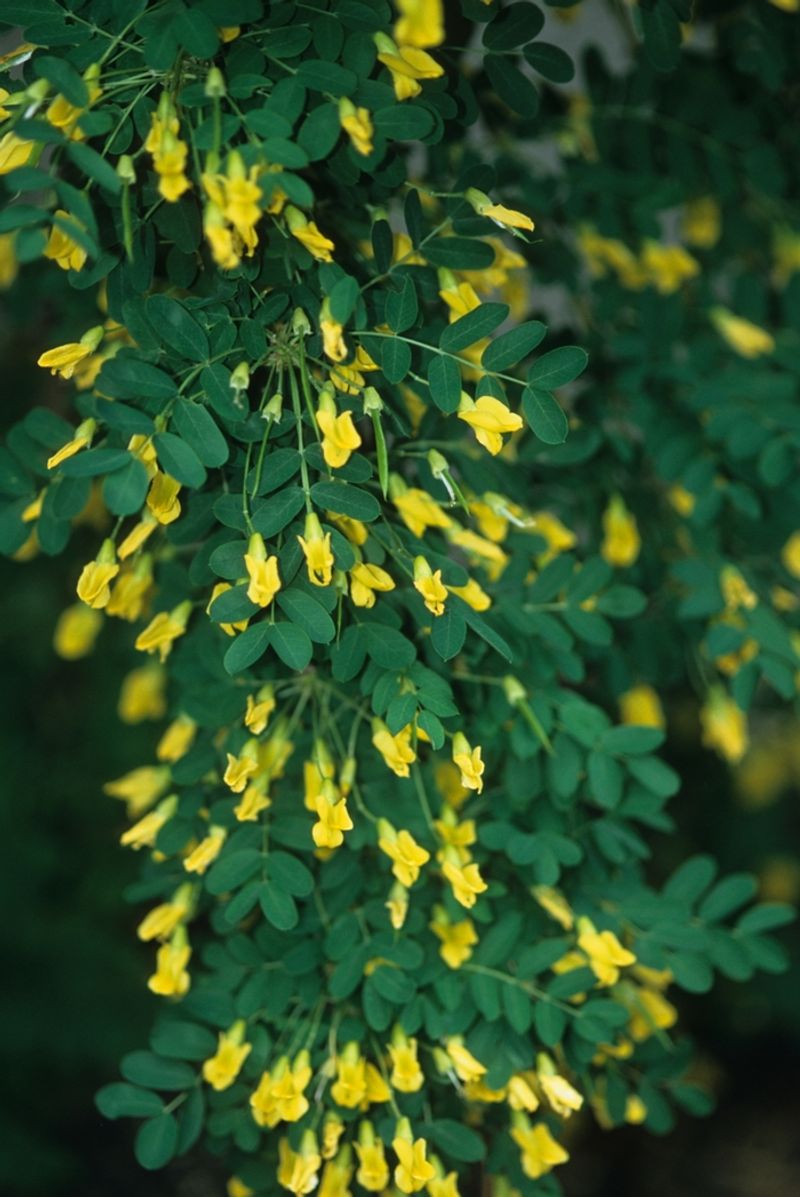Weeping trees bring a special kind of magic to any garden with their graceful, cascading branches. Their elegant shapes add vertical interest while gently softening the overall landscape.
If you’re dreaming of a standout focal point or a touch of romance in your outdoor space, these flowering weepers fit the bill perfectly. They offer striking structure alongside beautiful seasonal color that changes with the year.
I’ve found that adding one of these trees can truly transform a garden, turning it into a peaceful retreat that feels both dramatic and inviting. They’re a wonderful way to bring life and movement into your yard.
1. Weeping Cherry
Nothing announces spring quite like the spectacular display of pink or white blossoms cascading from arching branches. The delicate flowers appear before the leaves, creating a waterfall effect that stops garden visitors in their tracks.
During summer, the lush green foliage provides welcome shade and a graceful backdrop for other plantings. Many varieties offer bonus fall color with leaves turning gold, orange, or burgundy.
Perfect for smaller gardens, these trees typically reach 15-25 feet tall with a similar spread. Plant one where you can enjoy its reflection in water or as a standalone specimen in a place of honor.
2. Weeping Redbud
Small but mighty, this compact weeping specimen packs a visual punch with its twisted branches and heart-shaped leaves. Before foliage emerges, the bare branches become studded with tiny lavender-pink flowers that seem to float in mid-air.
Growing to just 5-8 feet tall, this petite beauty fits perfectly in courtyard gardens or tight spaces where other weeping trees might overwhelm. The contorted branches create winter interest even after leaves drop.
For me, pairing it with spring bulbs creates a magical vignette as the redbud’s blossoms echo the colors of tulips and muscari below. Consider planting where afternoon shade protects it during hot summers.
3. Weeping Crabapple
Graceful and disease-resistant, ‘Louisa’ creates a living fountain of flowers followed by tiny ornamental fruits. The soft pink blossoms blanket the gently arching branches in spring, creating a show that rivals any cherry tree.
Unlike some crabapples, this variety maintains clean foliage throughout the growing season without the disease issues that plague other types. The small golden fruits persist into winter, attracting birds when food sources are scarce.
My favorite spot for this 12-15 foot beauty is where its umbrella-like canopy can create a living playhouse for children or a secret garden nook. The branch structure allows sunlight to filter through, creating dappled shade perfect for woodland plants.
4. Weeping Japanese Maple
Fiery red lacy foliage creates a living sculpture that changes with the seasons on this garden aristocrat. The finely dissected leaves catch light beautifully, creating a translucent glow in morning and evening hours.
Growing slowly to about 8-10 feet tall, this maple develops a mushroom-like silhouette with branches that cascade toward the ground. The intense burgundy color holds well even in partial shade, unlike some red varieties that green out in summer.
Particularly striking against light-colored walls or near water features where it can be reflected, this tree deserves a prime viewing location. Consider underplanting with hostas or ferns for a serene Japanese-inspired garden moment.
5. Weeping Pussy Willow
Early spring brings the charming fuzzy catkins that give this tree its name, dotting the weeping branches like silver pearls. These soft, touchable blooms appear weeks before other trees show signs of life, making them a welcome harbinger of warmer days.
The graceful waterfall effect of branches creates year-round structure in the garden, even after the catkins transform into green leaves. Reaching 6-8 feet tall with a similar spread, it’s perfect for smaller properties where space is limited.
Surprisingly adaptable to wet areas where other trees might fail, this willow thrives in boggy spots or near water features. Butterflies adore the early nectar source, making it a valuable addition to wildlife gardens.
6. Weeping Pagoda Dogwood
Horizontal branches adorned with white flower clusters create distinct architectural tiers beneath a gracefully weeping canopy. The layered effect resembles a pagoda, giving this native tree its evocative name and creating winter interest even after leaves fall.
Bluish-black berries follow the flowers, attracting songbirds to the garden in late summer. The foliage turns a stunning burgundy-purple in fall, extending the seasonal show well into autumn.
Happiest with afternoon shade in hot climates, this 15-20 foot tree makes an excellent understory specimen beneath taller shade trees. The unique branch structure creates a perfect microclimate for woodland wildflowers and ferns planted beneath its protective canopy.
7. Weeping Snow Fountain Cherry
Cascades of pure white blossoms transform this small tree into a living fountain each spring. The flower display is so dense it often obscures the gracefully arching branches completely, creating a bridal-veil effect in the landscape.
Summer brings glossy green leaves that turn coppery-orange in fall, making this a three-season standout. Mature specimens develop an umbrella-like shape that rarely exceeds 15 feet in height or spread.
Particularly enchanting when planted on a slope or retaining wall where the branches can spill downward unimpeded. The relatively compact size makes it suitable for foundation plantings or even large containers on patios where space is limited.
8. Weeping Mulberry
Forming a living playhouse with its curtain of branches that reach all the way to the ground, this fast-growing tree creates instant drama. Children particularly love ducking under the canopy to find the secret space within.
The glossy green leaves cast dappled shade perfect for hot summer days, while some varieties produce tasty berries that attract birds (though potentially messy on patios). Grafted specimens stay relatively small at 8-12 feet tall, though the spread can become quite wide with age.
Consider training the branches over an arbor or pergola to create a living roof effect. The vigorous growth means annual pruning is necessary to maintain shape, but rewards you with a truly unique garden focal point.
9. Weeping Flowering Plum
Deep purple foliage creates dramatic contrast against lighter garden elements throughout the growing season. Unlike many purple-leaved trees that fade to green, this beauty maintains its rich color from spring through fall.
Pale pink flowers appear in early spring, creating an ethereal effect against the emerging purple leaves. The slender weeping branches form a rounded canopy that typically stays under 15 feet tall, perfect for smaller properties.
A natural for moon gardens, the dark foliage makes lighter flowers nearby seem to glow in evening light. Try surrounding it with silver-leaved plants or white flowers to maximize the dramatic color contrast that makes this tree so special.
10. Weeping Katsura
Heart-shaped leaves emerge burgundy-purple in spring before maturing to blue-green, all on gracefully arching branches. The foliage show continues into fall when leaves turn yellow, orange, and sometimes pink while releasing a sweet fragrance often compared to cotton candy or caramel.
This uncommon specimen grows slowly to 15-25 feet, creating a broad, fountain-like silhouette that commands attention. The smooth gray bark adds winter interest after leaves drop.
Plant where you can enjoy the fall fragrance near a patio or garden bench. The scent seems strongest on sunny fall days following light rain. A truly special tree that offers something unique in every season.
11. Golden Weeping Willow
Long associated with waterside plantings, this classic beauty creates movement in the garden as breezes stir its curtain of slender golden-green branches. The effect is both dramatic and soothing, especially when reflected in nearby water.
Growing quickly to 30-40 feet tall with an equal spread, this is one of the larger weeping specimens for spacious properties. The bright yellow-green bark on young branches adds winter interest after leaves fall.
Beyond its beauty, this tree serves practical purposes by stabilizing soil on slopes and absorbing excess moisture in low areas. Just be mindful to plant at least 50 feet from septic systems or water lines, as the roots seek water aggressively.
12. Weeping Blue Atlas Cedar
Silvery blue-green needles drape from sinuous branches that can be trained into living sculpture or allowed to cascade naturally. Unlike most weeping trees on this list, this conifer provides year-round color and texture with its evergreen foliage.
Extremely versatile in form, young specimens can be staked to create height before allowing side branches to weep dramatically. Some gardeners train them horizontally along walls or over structures for unique effects.
Growing very slowly, this architectural specimen needs patience but rewards with a truly one-of-a-kind presence in the landscape. The unusual blue color stands out brilliantly against dark green backgrounds or red brick walls.
13. Weeping Yoshino Cherry
Famous as the star of Washington DC’s cherry blossom festival, this weeping form brings the same cloud-like flower display to home gardens. The almond-scented blossoms appear in dramatic abundance, creating a pale pink to white canopy in early spring.
After flowering, the tree develops a graceful umbrella shape with cascading branches clothed in serrated green leaves. Fall brings subtle yellow to bronze color before winter reveals the attractive gray bark and elegant branch structure.
Reaching 20-25 feet at maturity, this variety needs space to display its broad, weeping crown properly. The flowers attract early-season pollinators, making it both beautiful and beneficial to the garden ecosystem.
14. Weeping Copper Beech
Dramatic purple-burgundy leaves clothe the pendulous branches of this aristocratic European tree. The foliage emerges coppery in spring before deepening to rich purple, creating a striking silhouette against lighter backgrounds.
Unlike many weeping trees that remain small, this magnificent specimen can eventually reach 30 feet tall with proper staking in youth. The smooth gray bark adds winter interest after the leaves drop, revealing the graceful cascade of branches.
Plant this showstopper where it has room to develop its full character over decades. The dense canopy creates deep shade beneath, perfect for a cool retreat on hot summer days or as a living privacy screen between properties.
15. Weeping Bottlebrush
Brilliant red brush-like flowers teeming with nectar-loving birds and butterflies make this Australian native a standout in warm-climate gardens. The unusual cylindrical blooms appear at branch tips, creating a festive display against the weeping, willow-like foliage.
Evergreen in zones 9-11, this drought-tolerant tree reaches 15-20 feet tall with a graceful arching habit. The narrow gray-green leaves release a pleasant fragrance when crushed, adding sensory appeal beyond the visual drama.
Particularly stunning when planted where its reflection can be enjoyed in water. The unusual flowers and fountain-like growth habit create a conversation piece that thrives in challenging hot, sunny locations where other flowering trees might struggle.
16. Weeping Camperdown Elm
Created in the 1850s, this living antique forms a natural umbrella with its densely branched canopy and large, textured leaves. Each tree is actually grafted, with the weeping portion growing from a single point on a straight trunk, creating its distinctive mushroom-like shape.
The rough, deep green leaves create a cool, shaded retreat underneath the dome of branches. Growing slowly to 15-25 feet tall with a similar spread, the mature form resembles a living gazebo.
Historical gardens particularly benefit from this Victorian-era specimen that brings period authenticity to the landscape. Consider placing a bench underneath to create a natural reading nook or meditation space shaded by the living canopy.
17. Weeping Peashrub
Bright yellow pea-like flowers dangle from weeping branches in spring, creating a golden waterfall effect rarely seen in weeping specimens. The unusual blossoms are followed by interesting seedpods that add textural interest through summer.
Extremely cold-hardy even in zone 2, this tough tree thrives where many other weeping trees cannot survive harsh winters. The finely-textured compound leaves create dappled shade and gentle movement with every breeze.
Reaching just 5-8 feet tall, this compact beauty fits perfectly in smaller gardens or urban spaces. The slender profile makes it ideal for narrow side yards or areas where width is limited but vertical interest is desired.

